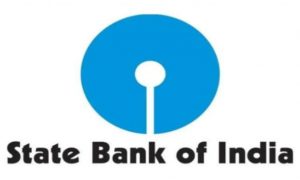Choosing a credit card whose benefits are aligned with your unique spending patterns and budget is key to maximising the value of your card spends.
If you think a credit card is just another payment tool, you could be wrong. Smart and disciplined credit card usage could help you save more on your spends and enrich your lifestyle experiences free of cost if you keep clearing your dues in full on time to avoid interest charges (typically ranging between 3% and 4% per month) and if you don’t have to pay any membership fee for the card.
That being said, choosing a credit card whose benefits are aligned with your unique spending patterns and budget is key to maximising the value of your card spends. So, if you’re planning to get a credit card, here are a few important things to keep in mind while comparing your options.
1. Eligibility
Most banks in the country have multiple credit card variants to offer. However, you might not be eligible for all the credit cards out there. Some card variants have steep income and credit score requirements. The point being, you should always search and compare credit cards according to your eligibility and avoid applying for cards you’re ineligible for to minimise the chances of application rejection and an unnecessary dip in your credit score because of the hard inquiries in the process.
2. Alignment of card benefits with your spending patterns
Furthermore, not all the credit cards you’re eligible for would be best suited to your requirements. Credit cards come with different types of core benefits like cashback, reward points, air miles, etc.; however, you should ideally pick a card whose benefits are aligned with your spending patterns. For example, if you don’t own a car and plan to use your card mainly for online shopping, you should choose a card that offers extra cashback or reward points on online shopping and not fuel refills!
Alignment of core card benefits with frequent spending categories is important to maximise the benefits. You should also read the fine print to get complete clarity about the benefit riders like capping on cashback, reward points redemption options and conversion rates, etc. and try to evaluate the actual value proposition of its benefits to further fine-tune your selection.
3. Budget
Now assume you’ve shortlisted a few cards based on your preferred spending categories – but how do you figure out which one works best for you? You should pick the option that allows you to maximise the card benefits while staying within your monthly budget for card spends. For example, if your monthly card spending budget is Rs 20,000, you should go for a variant that offers, say, a 10% cashback for eligible spends up to Rs 20,000. This could easily help you save Rs 2,000 per month (or Rs 24,000 in a year) on your spending.
If another card offers the same benefits, but the spending requirement threshold is higher at Rs 40,000, your budget will not allow you to maximise the card benefits. The point being, you must never breach your budget for card spends to maximise the benefits to ensure you’re able to easily clear your total outstanding within the interest-free period every billing cycle.
4. Credit limit
Banks determine the credit limit linked to a credit card account depending on the applicant’s income and credit score among other considerations. Meaning, different banks may offer you different credit limits linked to credit cards as per your income and credit score. But you may want to go for a card variant that has a high credit limit. This would help you to keep your credit utilization ratio way below the 30% mark that bodes extremely well with a good credit score.
Do note, however, a high credit limit doesn’t mean a license to spend beyond your budget. It just gives you a bit more leeway if you have an urgent big-ticket spending requirement, it safeguards your credit score and also boosts your eligibility to apply for premium credit card variants in the future.
5. Annual fees
While there’s no dearth of zero annual fee credit cards in the market, at times these are only the basic variants with limited benefits. So, if you’re looking for a premium credit card with enhanced benefits, you could consider going for a variant whose annual fee doesn’t impact your budget and, more importantly, when the usage benefits exceed the membership charges. Furthermore, many annual fee-charging credit cards also come with annual spending targets – if your budget allows you to meet those targets, your annual fee would automatically get waived off during renewal.
6. Additional perks, privileges and facilities
Most credit cards also come with perks, privileges and facilities in addition to the core benefits like cashback and reward points, and you should choose a card whose additional benefits you like the most. These additional benefits could be complimentary travel insurance, free lounge accesses, joining gifts, the option to take a loan against your credit card, easy EMI facilities, special discounts or promotional offers when you shop for particular brands or from specific e-commerce sites, special deals on hotel bookings and at selected restaurants, etc. depending on the card variant. These attractive perks could further sweeten your experience of using a credit card. So, don’t ignore them.
In conclusion, it might be a bit difficult to find a credit card that ticks all these boxes at the same time – however, a card that largely incentivises your prominent spending categories while staying within your budget and offers a wide array of useful perks and privileges could be good enough too. But regardless of the card variant you end up choosing, ensure you spend intelligently and stay within your means to easily avoid the interest charges and an adversely-impacted credit score.
(The writer is Co-founder and CEO, BankBazaar.com)





































